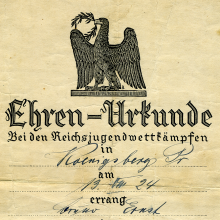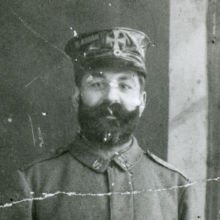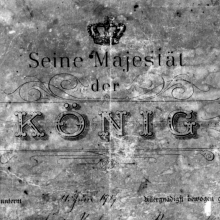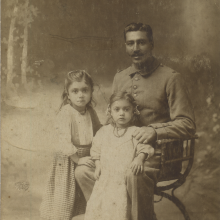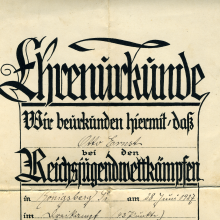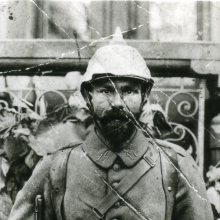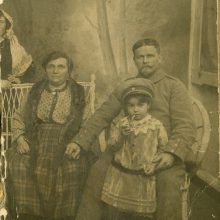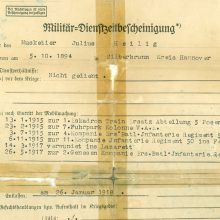Self-assertion
In the files preserved from the German Empire and the Weimar Republic, ‘gypsies’ feature as objects of state repression, and the image of the ‘gypsy’ found in them is both one-sided and fragmentary. Despite the discriminatory special provisions (which, in any case, were not consistently implemented in practice), many families were able to find their place in society and assert themselves economically. Indeed, the private photographs of Sinti and Roma that have been preserved from that period depict a wide range of lifestyles and social conditions.
As many examples at both the local and the regional level show, everyday interactions between minority and majority population were nothing if not diverse. The most striking evidence of this integrated life is to be found in historical photographs that show the Sinti and Roma as soldiers before or during the First World War.
01 | Elisabeth Haag (née Lagrene), c. 1917 Documentation Centre Archives
01
02 | Paul Steinbach in his soldier’s uniform, with his two nieces Documentation Centre Archives
02
03 | Members of the Ernst family, a Sinti family from eastern Prussia, c. 1905 Documentation Centre Archives
03
04 | Bruno Ernst was later murdered at Mauthausen concentration camp. Documentation Centre Archives
04
05 | Certificate for Otto Ernst (1927) Documentation Centre Archives
05
06 | Friedrich Steinbach as a soldier in the Imperial Army Documentation Centre Archives
06
07 | Filip Strauß served as a soldier in the First World War and was later murdered in Auschwitz. Documentation Centre Archives
07
08 | Eduard Höllenreiner served as a soldier in the First World War Documentation Centre Archives/private collection of the family of Marco Höllenreiner
08
09 | ‘Silver Medal for Distinguished Service’ awarded to Eduard Höllenreiner, June 1917 Documentation Centre Archives
09
10 | ‘Commemorative medal’ awarded to ‘musketeer’ Oskar Rose, 1897 Documentation Centre Archives
10
11 | Gottlieb Bamberger served as soldier in the First World War Documentation Centre Archives
11
12 | Wilhelm Ernst served as soldier in the First World War Documentation Centre Archives
12
13 | Wilhelm Heilig, pictured here with his wife and child, served as a soldier in the First World War. Documentation Centre Archives
13
14 | This military service record states that musketeer Julius Heilig was awarded the Iron Cross 2nd Class on 8 January 1917. Documentation Centre Archives
14

